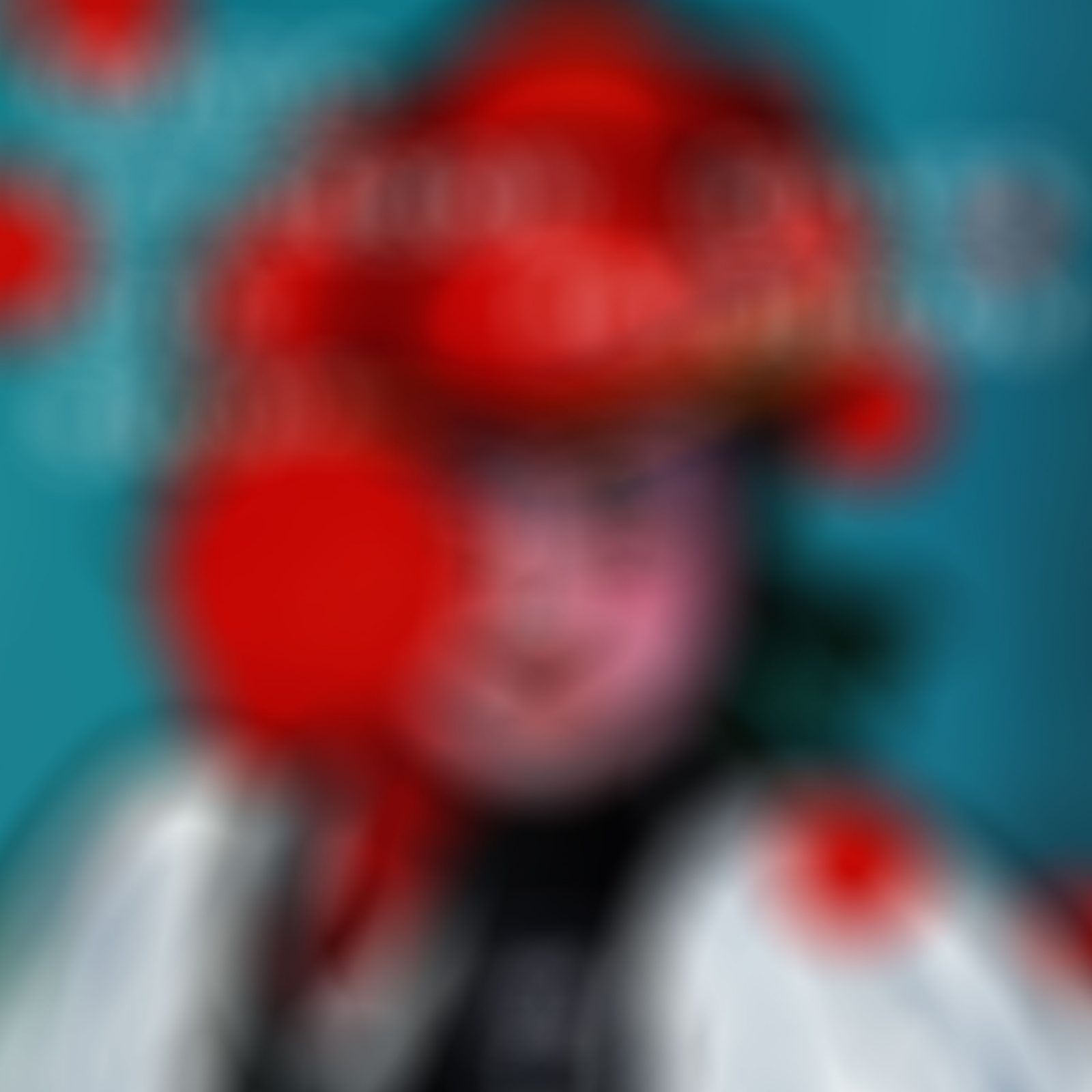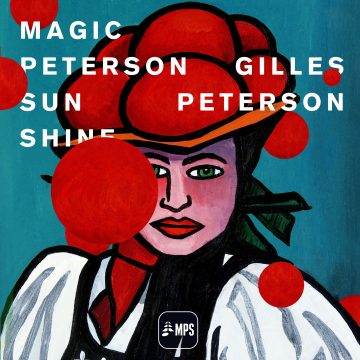Gilles Peterson has a special love afair with MPS. To be exact, it goes back more than three decades to the London of the 1980’s when Gilles stood at the beginning of an exceptional career as DJ, Radio personality, and producer. At that time he was already interested in unusual and unique jazz recordings, and so he inevitably came across the record label from Germany’s Black Forest (Schwarzwald), whose catalogue encompassed a large, totally distinct repertoire that had never been released anywhere else. Naturally, there was a long list of amazing interpretations of jazz classics from acknowledged jazz masters, but early on Gilles had developed the talent to dig deeper into the depths of the archives in order to ferret out the special features of the catalogue – occasionally discovering a obscurity – and bring them to the light of day. He seemed to be able to efortlessly show a completely new connection between classic jazz recordings through the way they were chosen, assorted, and sequenced. Thus, every single title was imbued with a new energy, freshness, and, above all, timelessness, always with an eye on whether the chosen recordings would possibly be compatible with the needs of clubs. This present MPS compilation is an especially good example of Gilles Peterson’s amazing talent. It delivers only a small, yet carefully chosen section out of the depths of the MPS archives. Let’s take several steps back to where it all began – back to the town of Villingen in Germany’s Black Forest. There are many myths and stories about the label and its founder Hans Georg Brunner Schwer, simply known as HGBS. Towards the end of the 1950s he began to produce the frst recordings under the SABA (Schwarzwälder Apparate Bau Anstalt = Black Forest Appliance Manufacture) label. Later HGBS organized his legendary house concerts in an annex to his own villa. Among the many who played there, Oscar Peterson certainly counted among the most famous. HGBS built his studio directly over his living room where he could, with the help of the earliest video techniques, directly record and mix the concerts. There are many legendary stories about sessions that lasted long after midnight with very happy musicians, especially those who enjoyed catering directly from Brunner-Schwer’s wife Marlies. And let’s not forget that the good pay was yet another reason the musicians looked forward to returning to the villa in the Black Forest. None of this changed when in 1968 HGBS sold SABA and renamed the label to what it is known by today: MPS - Musik Produktion Schwarzwald (Black Forest Music Production).
read more
Over the years, HGBS built up a jazz catalogue of over 500 recordings. Additionally he recorded classical, martial, so-called New German Easy Listening, as well as Schlager music – HGBS was an allaround wiz. In the 1960s and 70s MPS was one of the leading, if not the leading, jazz labels in Europe. It was not until the 1980s that another German label overtook them in terms of the size of their catalogue (ECM records out of Munich). As the technological executive director of SABA and later as record label owner, HGBS was not accountable to anyone for the commercial success of the productions. His fnancial background allowed him to produce recordings that were unrivalled in their type and scope. He didn’t have to think about the fnances – anyone who had seen his Maybach automobile collection knew why. HGBS was not responsible for all of the jazz productions; in Joachim Ernst Berendt he had another bustling media-efective producer on ship. Berendt was known for his gutsy, at times experimental productions, ranging from world music (the SABA/MPS series “Jazz Meets The World” counts as one of the frst world music recordings) to the Avant-garde and free jazz. Two wonderful examples from Berendt’s series are found in the present compilation: Pedro Iturralde’s Flamenco jazz album, with a young Paco de Lucia, as well as an extract from Georg Gruntz’s Jazz Meets Arabia album, Noon in Tunesia. By contrast, HGBS loved the classic recordings of the great pianists, especially in solo, or as duo or trio, with Oscar Peterson leading the way. Peterson’s MPS recordings are acknowledged as some of the best of his long career. Stylistically, the label contains an incredibly broad artistic roster of outstanding artists, from Milt Buckner to Cecil Taylor, from Friedrich Gulda to Sun Ra! Another observation concerning MPS’ pool of artists: the productions were often drawn from players who were already famous, but this was not always the case. Many musicians who are internationally renowned today are heard here in some of their earliest recordings. Musicians such as Joachim Kühn and Wolfgang Dauner especially benefted from their work with MPS. Others, such as George Duke (also represented here as producer of the group The Third Wave), and Monty Alexander, released their frst albums on MPS, and remained loyal to the label for a long time. Even Jan Hammer, who became world famous through his Miami Vice soundtrack, recorded for MPS as a still unknown pianist in 1968. Others, such as the recently deceased vibraphonist Dave Pike, celebrated the highpoints of their careers with their MPS recordings. The label has written a lot of history. A specialty of SABA/MPS was the extremely high quality of the vinyl pressings long before 180gr pressings were used as selling points. The label produced the best possible audiophile sound, fantastic glossy foldout covers in thick album sleeves – these insured a high rate of collector inquiries concerning the label’s recordings, and this had also excited Gilles Peterson. Now it’s time to be carried away by Gilles’ selections from the label’s multifaceted recordings. We’ll start with Don Ellis, one of many American musicians who recorded for MPS. Ellis was an incredibly versatile musician who achieved fame as trumpeter (he invented a trumpet with four valves so that he could play quartertones), as well as drummer, but he became best known as composer and band leader. He was intensively involved with the infuences of new music in jazz. Many of his albums are noted for their extreme complexity while retaining a certain groove. His soundtrack for the American cult flm “The French Connection” is an enduring classic that earned him a Grammy. Shortly after these successes Ellis recorded two albums for MPS, one in 1973, the other in ’74. Gilles has chosen “Dew” the last composition from the second album, Haiku. All of the titles on the album were based on Japanese Haiku poems. It’s a relaxed beginning to this MPS compilation. To write about Mary Lou Williams in the amount she deserves would take up more space than is contained in this entire set of liner notes. She was the Grande Dame of jazz, perhaps the most important trailblazer for women’s claims to equal status in jazz. In her long career spanning over half a century, she played on countless recordings. Among these was the album Black Christ of the Andes, recorded in New York in 1963 and released in 1964 on her own private label, Mary Records. SABA acquired the album and released it to a much wider public in 1965. It is a distinct hybrid of modal jazz, gospel, and soul jazz. The George and Ira Gershwin classic It Ain’t Necessarily So is presented here, with possibly the most individual interpretation ever. German harpist Jonny Teupen counts as one of the exotics of this compilation, and it’s not just because of an instrument that seldom surfaces in jazz discographies. At one point he was much better known as a classical harpist who enjoyed venturing into the realm of easy listening music. He recorded a total of three jazz-oriented albums for SABA/MPS. Harpadelic is the most exciting; Gilles picked out Harp Revolution from this 1969 album. We have already spoken about the outstanding “Jazz Meets the World” series, organized and produced by Joachim Ernst Berendt, the man who was responsible for many precedent-setting MPS productions. Spanish saxophonist Pedro Iturralde’s album Flamenco Jazz is certainly one of the highlights of this series, and features the then 19 year old Paco de Lucía in one of his earliest recordings. Recorded in Berlin in 1967, it is still one of the best recordings of the fusion between famenco and modern jazz, which the title Canción Del Fuego Fatuo illustrates. Now we come to German jazz musician Gunter Hampel’s 1965 album Heartplants, one of the most stand-alone recordings in the entire SABA/MPS catalogue; Hampel, who would gain an international reputation as vibraphonist as well as soprano saxophonist, bass clarinetist, and fautist, purposefully attempted to extricate himself from the dominance of America in the music and create a Europeanbased expression of jazz. With its strongly bound forms, the album was a milestone in the early European free jazz movement. The composition Our Chant is a terrifc choice for the collection. George Gruntz’s composition, Nemeit, from his 1967 album Noon in Tunisia serves as the second fantastic example from the multifaceted “Jazz Meets the World” series. Guntz is also the pianist. Along with jazz musicians Sahib Shihab, Jean-Luc Ponty, Daniel Humair, and Eberhard Weber, an ensemble of North African percussionists and instrumentalists complete the assemblage. Nemeit is the album’s last track, and especially represents the uniqueness of this coupling of Bedouin music with jazz – Jazz Meets Arabia! The Swiss George Gruntz later went on to record a whole series of MPS albums with his big band, The George Gruntz Concert Jazz Band, but Noon in Tunisia remains his most exceptional MPS album. Unfortunately the Austrian jazz musician Roland Kovac never received the international acclaim he deserved. Kovac’s homeland should have recognized him as one of the most formative musicians of the post-war period. Not only did Kovac work as pianist, saxophonist, and clarinetist, he also wrote a large number of compositions and arrangements for radio and TV. The album Trip to Mars, with its appropriately futuristic cover drawn in the spirit of the times, was originally recorded as an advertising gag for an atomic power plant. Curiously, the plant was never put into operation. Kovac was able to persuade MPS to take over the production costs of the tapes – and so an absolute cult classic was born. Gilles chose Service I from the 17 spacey jazz movements played by a number of musicians from the Kurt Edelhagen Big Band. The Third Wave was a five-sister Philippine pop jazz ensemble discovered by none other than keyboard legend George Duke, who had himself recorded a number of high-quality albums for MPS. Through Duke’s help they made the journey to Germany where they recorded the album Here and Now in 1970. The song chosen here, Love Train, was released as a single and was not on the album. As a result, it has become a much sought after rarity. One of the groups that gave MPS a special identity to was the vocal group The Singers Unlimited. Founded in Chicago by Gene Puerling, the group found its way to HGBS through the recommendation of Oscar Peterson. During their long relationship with MPS, they recorded over a dozen albums. Among them was the 1977 production with the Roger Kellaway Quintet, Just in Time. The song Stone Ground Seven is a beautiful example of the unmistakable style of this exceptional vocal group. In 1970 the French pianist and organist Eddie Louiss along with his trio colleagues, saxophonist John Surman and drummer Daniel Humair recorded one of the most progressive MPS albums, Our Kind of Sabi. The piece chosen, Out of the Sorcellery, stemmed from the pen of Humair, and demonstrates Louiss’ broad playing spectrum on organ. (CD bonus track) Released in 1973, British pianist John Taylor’s Decipher counts as one of the most sought-after MPS albums. One of the island’s most important jazz musicians Taylor frst gained prominence in 1969 when he partnered with saxophonists John Surman and Alan Skidmore. In 1977 Taylor, along with his former wife singer Norma Winstone and trumpeter Kenny Wheeler, formed the trio Azimuth. Taylor’s only recording for MPS falls in the period between the two projects. The composition White Magic impressively documents the power of this post-bop album. The Modern Jazz Group Freiburg proved that active jazz scenes existed in every part of Germany. The group around pianist Ewald Heidepriem was featured on a SABA sampler that presented four diferent pianists to a wider public, Piano x 4. Gilles’ choice was their impelling version of AfroAmerican saxophonist Jimmy Heath’s composition Big “P”. The Belgian pianist Francy Boland is one of the major musicians whose profle has been enlarged through his connection with MPS. Naturally, at this point we have to mention the Clarke-Boland Big Band, who recorded numerous albums for MPS. For years, they were Europe’s best big band, boasting an unbelievable list of internationally renowned soloists. Besides the CBBB albums, Boland recorded under his own name for MPS. One of these albums was the lounge music oriented Flirt and Dream from 1967. The gorgeous waltz Lillemor foats over a soundscape of a 21 piece string orchestra – heavenly! The recently deceased American jazz singer Mark Murphy was a major force on the jazz vocals scene. During his career he received four Downbeat Male Singer of the Year awards and six Grammy nominations, but with his freewheeling virtuosity and iconoclastic style Murphy deserved a wider audience beyond the borders of jazz. His single album for MPS, the 1968 Midnight Mood, is studded with fantastic tracks, from soul jazz to ballads, on through to Latin jazz. It stands as one of the best vocal jazz albums on the label. Why and How is one of the highlights of this exceptional record. Wolfgang Lauth and Herman Impertro’s Kantate for Chor & Jazz-Combo, Denn Liebe ist stark wie der Tod represents one of the few independent compositions of European sacred jazz. The cantata was recorded as part of a youth church service, and was released by SABA in 1968 as a 7inch single - a spirit out of the depths of the MPS archives. Wolfgang Dauner’s track takes us back to 1962 and the beginning of MPS, or more correctly, SABA. At the time, an album appeared under the relatively technical name Jazz-Studio H.G.B.S. Number One a production that contained pieces from the Wolfgang Dauner Trio as well as recordings with the Hans Koller Octet. What is particularly special about this album is that the original monaural pressing exclusively contains Dauner’s exquisite trio recording of his Love in Summer – the stereo version does not include the piece. Another extreme rarity in the seemingly endless catalogue of the record company in the Black Forest, and a beautiful close to this compilation.



